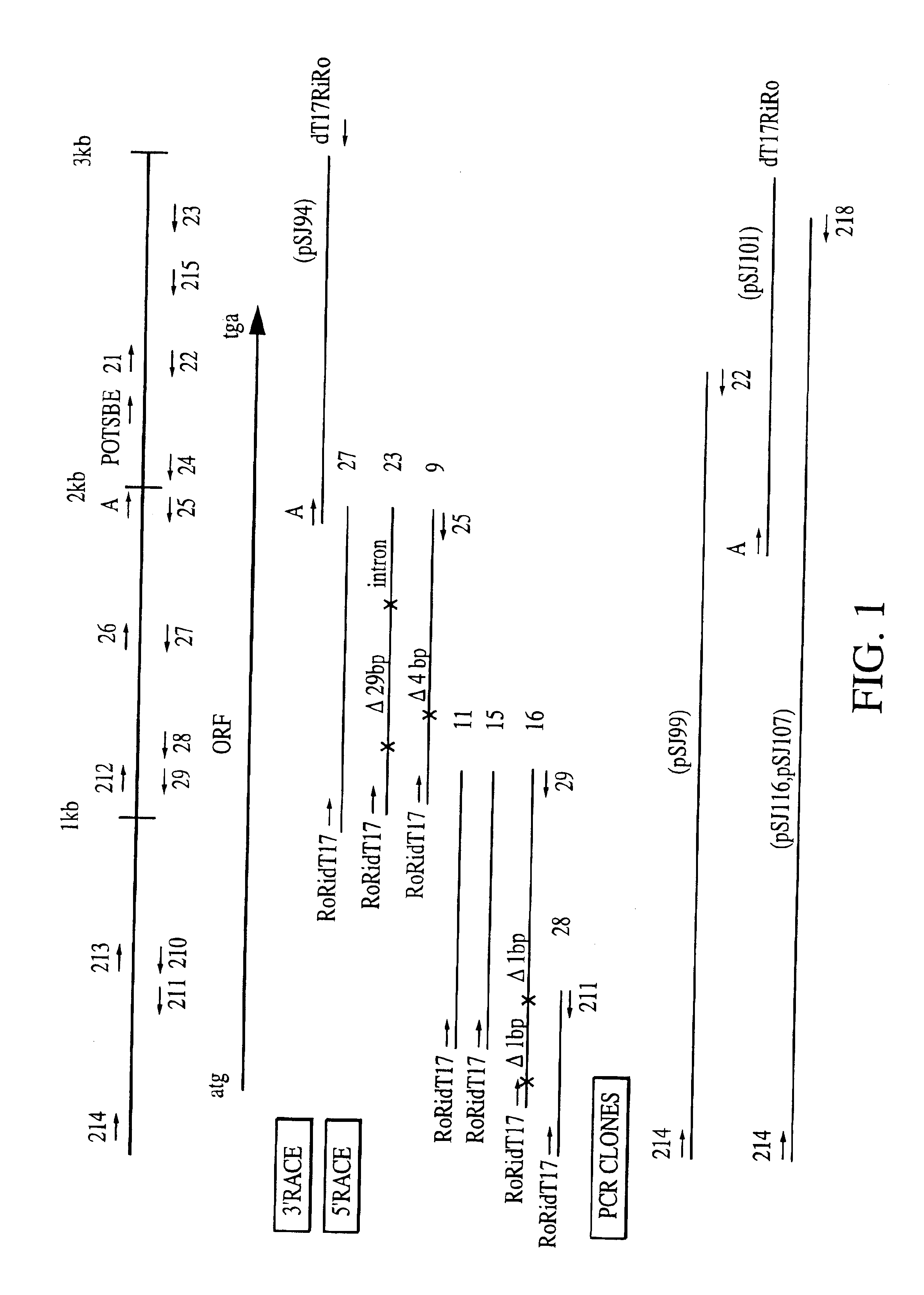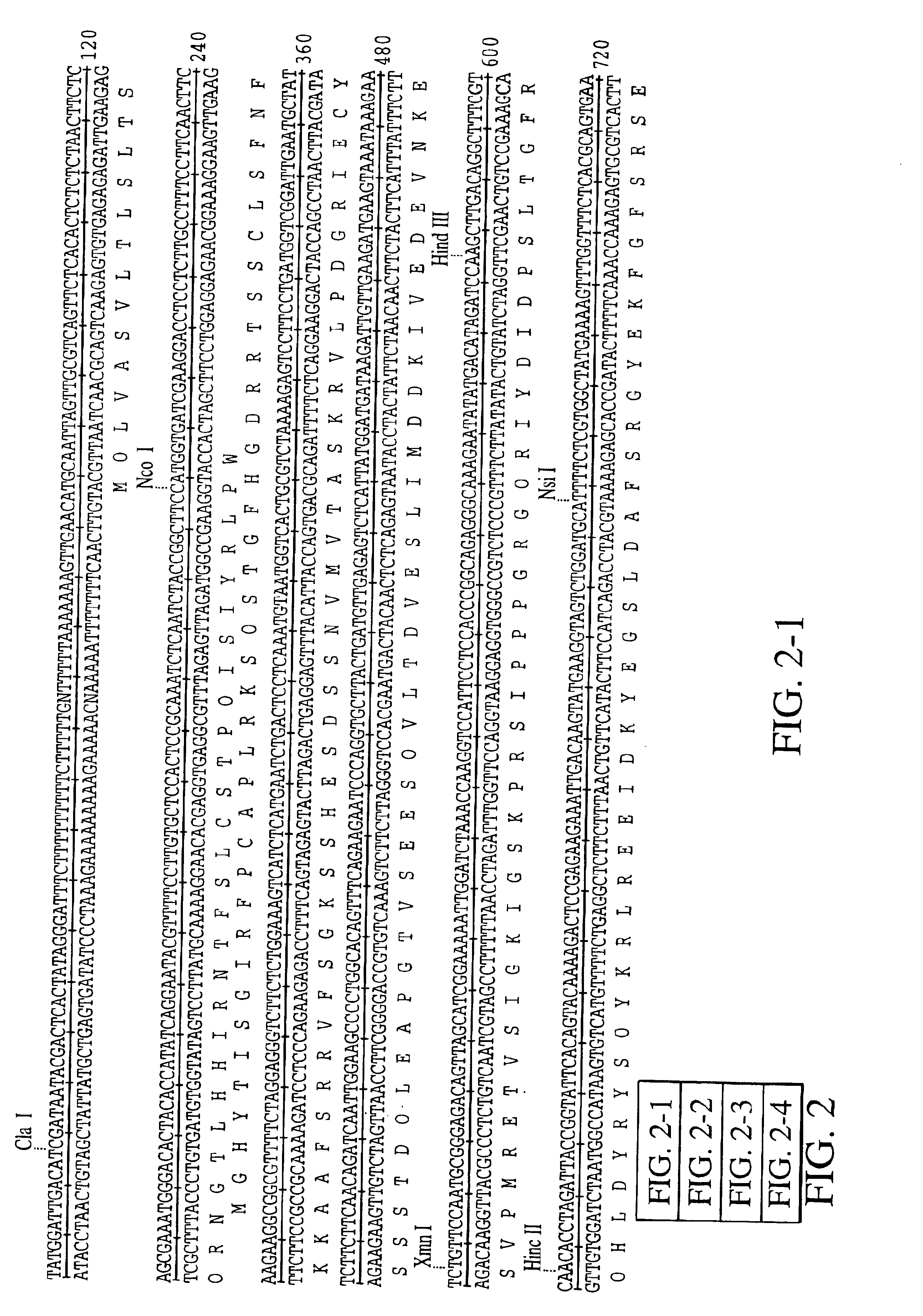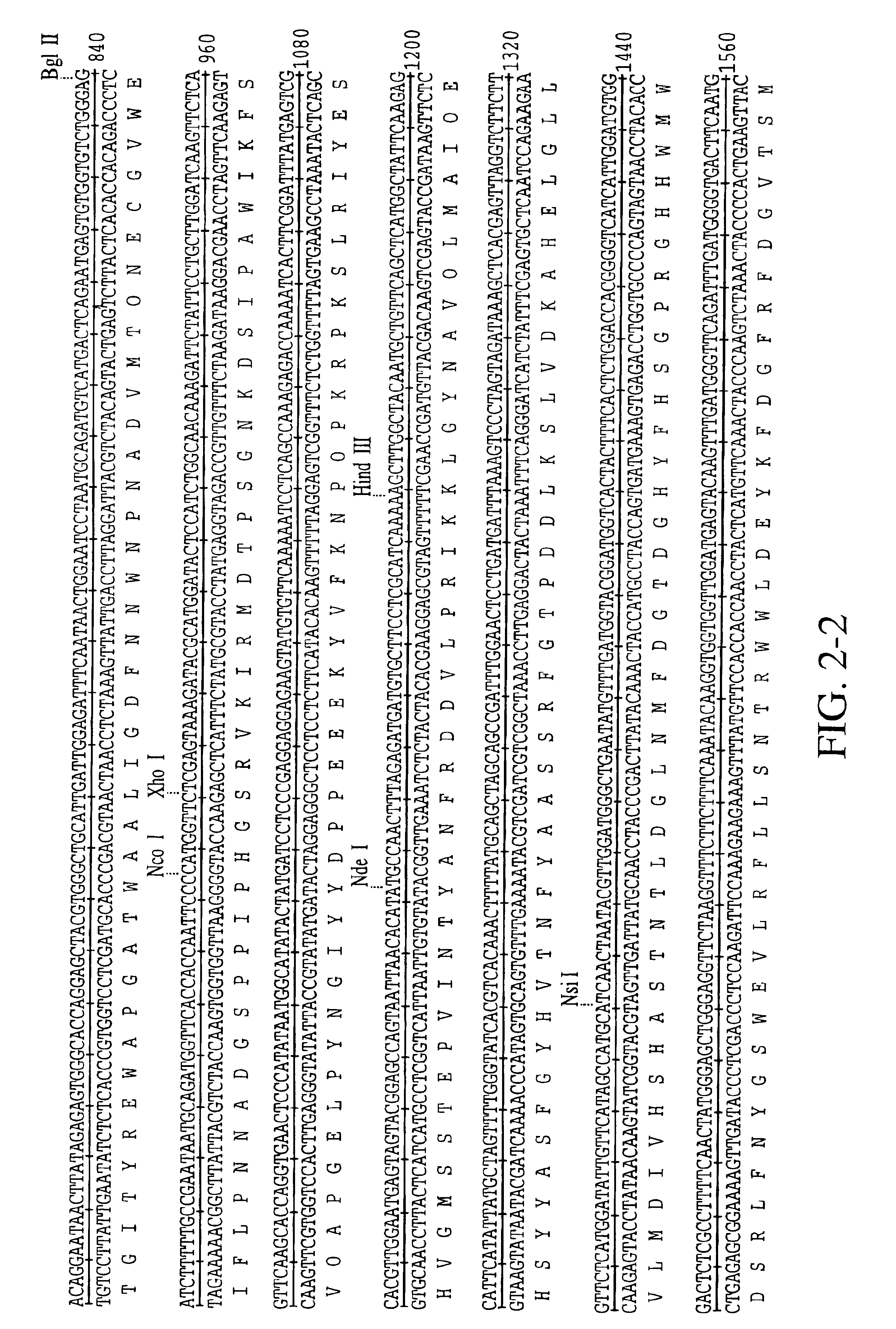Nucleic acids from cassava encoding starch branching enzyme II (SBEII) and their use
a branching enzyme and cassava technology, applied in the field of nucleic acids sequences, vectors and host cells, can solve problems such as inability to achieve, and achieve the effect of increasing the content of amylos
- Summary
- Abstract
- Description
- Claims
- Application Information
AI Technical Summary
Benefits of technology
Problems solved by technology
Method used
Image
Examples
example 2
Cloning of a Second Full Length Cassava SBE II Gene
Methods
[0071]
OligonucleotidesCSBE219CTTTATCTATTAAAGACTTC(Seq ID No. 20)CSBE220CAAAAAAGTTTGTGACATGG(Seq ID No. 21)CSBE221TCACTTTTTCCAATGCTAAT(Seq ID No. 22)CSBE222TCTCATGCAATGGAACCGAC(Seq ID No. 23)CSBE223CAGATGTCCTGACTCGGAAT(Seq ID No. 24)CSBE224ATTCCGAGTCAGGACATCTG(Seq ID No. 25)CSBE225CGCATTTCTCGCTATTGCTT(Seq ID No. 26)CSBE226CACAGGCCCAAGTGAAGAAT(Seq ID No. 27)
[0072]The 5′ end of the gene corresponding to the 3′ RACE clone pSJ94 was isolated in three rounds of 5′ RACE. Prior to performing the first round of 5′ RACE, 5 μg of total leaf RNA was reverse transcribed in a 20 μl reaction using conditions as decribed by the manufacturer (Superscript enzyme, BRL) and 10 pmol of the SBE II gene specific primer CSBE23. Primers were then removed and the cDNA tailed with dATP as described above. The first round of 5′ RACE used primers CSBE216 and Ro. This PCR reaction was diluted 1:20 and used as a template for a second round of amplification...
example 3
Construction of Plant Transformation Vectors and Transformation of Cassava with Antisense Starch Branching Enzyme Genes
[0077]This example describes in detail how a portion of the SBE II gene isolated from cassava may be introduced into cassava plants to create transgenic plants with altered properties.
[0078]An 1100 bp Hind III—Sac I fragment of cassava SBE II (from plasmid pSJ94) was cloned into the Hind III—Sac I sites of the plant transformation vector pSJ64 (FIG. 11). This placed the SBE II gene in an antisense orientation between the 2×35S CaMV promoter and the nopaline synthase polyadenylation signal. pSJ64 is a derivative of the binary vector pGPTV-HYG (Becker et al., 1992 Plant Molecular Biology 20: 1195-1197) modified by inclusion of an approximately 750 bp fragment of pJIT60 (Guerineau et al 1992 Plant Mol. Biol. 18, 815-818) containing the duplicated cauliflower mosaic virus (CaMV) 35S promoter (Cabb-JI strain, equivalent to nucleotides 7040 to 7376 duplicated upstream of ...
PUM
| Property | Measurement | Unit |
|---|---|---|
| Fraction | aaaaa | aaaaa |
Abstract
Description
Claims
Application Information
 Login to View More
Login to View More - R&D
- Intellectual Property
- Life Sciences
- Materials
- Tech Scout
- Unparalleled Data Quality
- Higher Quality Content
- 60% Fewer Hallucinations
Browse by: Latest US Patents, China's latest patents, Technical Efficacy Thesaurus, Application Domain, Technology Topic, Popular Technical Reports.
© 2025 PatSnap. All rights reserved.Legal|Privacy policy|Modern Slavery Act Transparency Statement|Sitemap|About US| Contact US: help@patsnap.com



